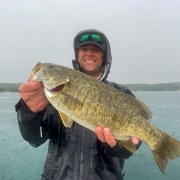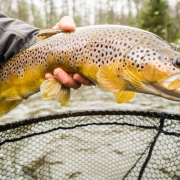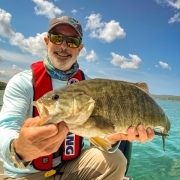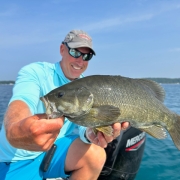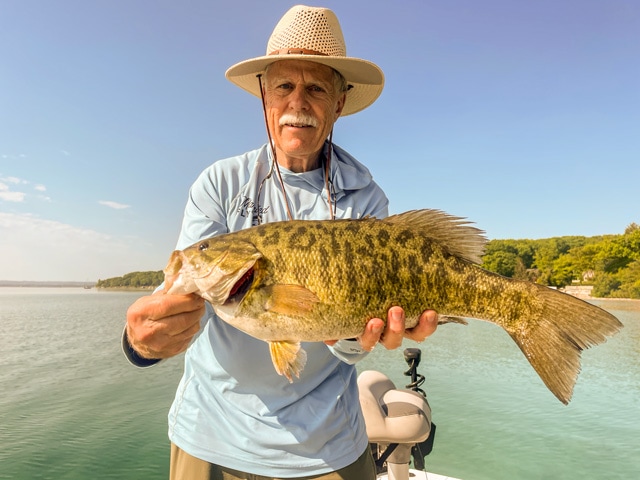Grand Traverse Bay
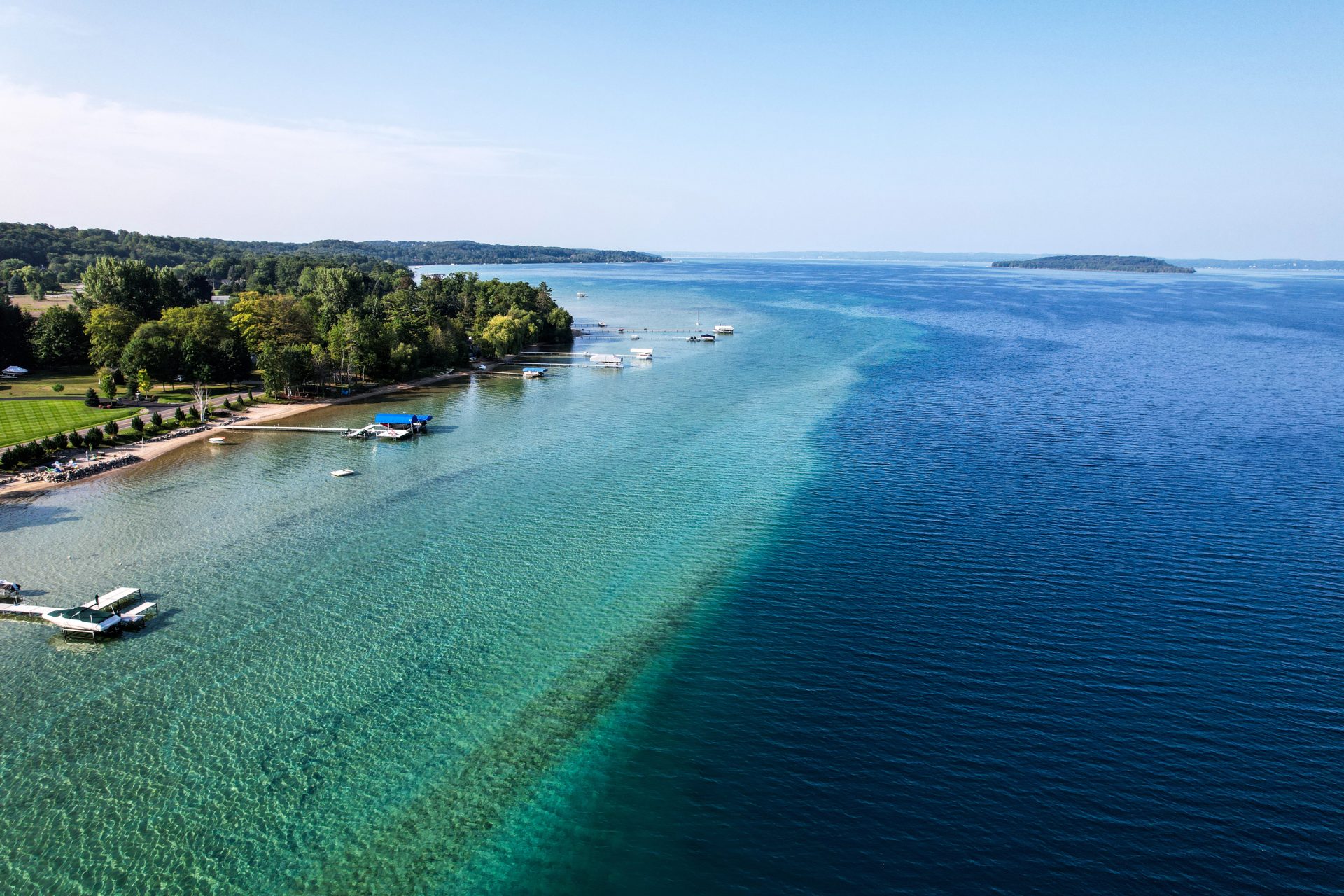
Throughout the year, the changing seasons play a significant role in smallmouth bass fishing. Seasonal change affects both the behavior of the fish and the strategies employed by anglers. In particular, the optimal month for Grand Traverse Bay smallmouth bass fishing can vary depending on the season. Spring often boasts a period of heightened activity as smallmouth bass feed aggressively coming out of winter. As the waters warm up in late spring to early summer, smallmouth bass move shallower for the spawn. Therefore, anglers may find the months of May and June to be particularly ideal for targeting smallmouth bass.
Summer
During the summer fishing for Grand Traverse Bay smallmouth bass can be an exciting and rewarding experience for anglers of all skill levels. With the warming temps Smallmouth in Grand Traverse Bay will tend to go deeper than they do in the Spring. However, this doesn’t mean they are too deep for topwater offerings, especially if you’re willing to get up early. Fishing smallmouth bass on topwater is truely an exciting approach to fishing the Grand Traverse Bay.
When targeting Grand Traverse Bay smallmouth bass in the summer it is important to focus on areas with structure. Rock structures such as rocky points, ledges, and rock piles, are all areas where these fish like to feed. Goby and Crayfish patterns are a key food source for smallmouth bass. The key to success here is to find the preferred bait which usually means you will find the smallmouth bass. One thing about smallmouth bass that translates well universally is no food = no smallmouth bass. These guys love to eat and will be found very close to their food source.
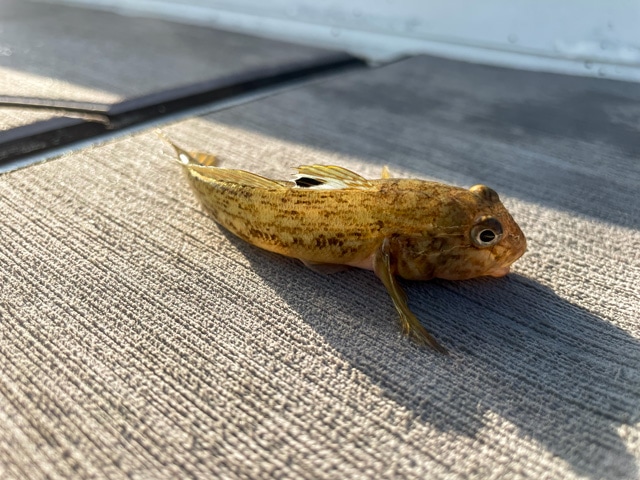
Invasive Gobies provide plenty of food for Smallmouth Bass
Fall Fishing
Fall is a prime season for smallmouth bass fishing in Northern Michigan. The Fall is particularly renowned for its abundance of trophy-sized smallmouth bass. As the temperatures begin to cool, these elusive and aggressive fish become more active. They can often be found moving into shallow waters in search of food to prepare for the upcoming winter. The crisp autumn air and vibrant colors of the changing leaves provide a picturesque backdrop for anglers seeking the thrill of battling these hard-fighting Grand Traverse Bay smallmouth bass.
Whether casting along rocky shorelines with Umbrella rigs, targeting submerged structure with swimbaits, or working shallow flats with the fly rod, the opportunities for landing a trophy smallmouth are plentiful during the Fall in Northern Michigan. With the combination of ideal weather conditions and the smallmouth’s voracious feeding habits before Winter, Fall smallmouth bass fishing offers anglers an unparalleled experience on the water.
With more anglers focused on King Salmon and Steelhead fishing many of the best inland lakes and Grand Traverse Bay can be barren of other anglers.
Fishing Techniques
Fishing methods for smallmouth bass can range from using gurgle bugs on a fly rod to drop-shotting deep rock piles off a point. While we primarily enjoy using a fly rod with various patterns such as Goby, Crayfish, and Topwater flies, we also recognize the importance of having a spinning rod as a backup. Windy conditions and the need to approach larger fish in clear water from a distance are conditions that at times are better managed with spin tackle.
In the clear waters of Grand Traverse Bay, smallmouth bass may not always be approachable with a fly rod thus prompting the need for spinning gear. Grand Traverse Bay is known for regularly yielding smallmouth bass weighing in excess of six pounds. These larger bass are old and wise and often require long casts to catch. Additionally, many anglers appreciate the exhilarating challenge of catching and fighting a smallmouth bass on light spinning gear.
Conclusion
Want to experience the thrill of smallmouth fishing in the pristine waters of Grand Traverse Bay where the breathtaking natural beauty meets unparalleled angling opportunities. Northern Michigan is home to some of the finest smallmouth bass fishing in the country. This picturesque bay offers the perfect setting for both seasoned anglers and beginners looking to hone their angling skills. Grand Traverse Bay promises a fishing experience like no other! So come and immerse yourself in the tranquility of Grand Traverse Bay, feel the excitement of each bite, and savor the joy of reeling in a prized smallmouth bass.


